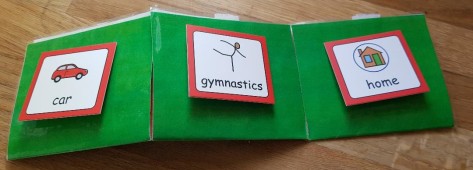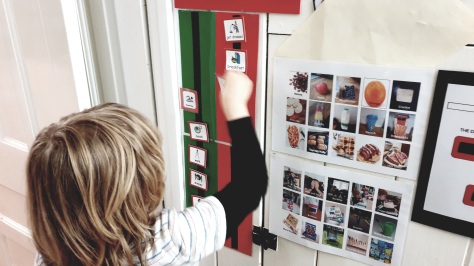The pain and illness that has consumed our house for the last forty-eight hours has passed. After a good night’s sleep, I stretch my arms upwards and breathe in the new day.
I pick up my phone and focus on a new goal. At Rhys’ annual review a few days ago, we discussed the use of Makaton and how visual signs are a good method of aiding verbal understanding. Rhys is a visual learner, so I was keen to get started on a way to enhance our communication and develop his understanding.
‘Good Morning’, seamed like a good start to my Makaton journey. I type it into Google and watch a lady demonstrate the sign. It is a simple thumbs up and swoop across the shoulders. “I’ve got this” I say to myself, holding up my thumb and swooping my hand from one shoulder to another, in confirmation of knowing the sign.
I know that Rhys is one step ahead of me in learning Makaton, after his experience of it in school. So I have a positive feeling that this is going to be a good move forward for us.
I can hear the chatter of Rhys next door as he occupies himself with his numbers. He must have been up for about an hour, but is happily entertained, and for once has not pounced on top of me in the commencement of a game of hide and seek.
Walking into his room, I crouch down in front of him. Previous multiple attempts of prompting for a “Good morning” have been semi successful, but never clear or freely spoken. So I am excited to see how this works out.
Looking into Rhys eyes, I get his attention. “Good Morning” I say, holding my thumb up and passing my hand across my chest, in sync with the two words as I speak them.
“Good Morning” replies Rhys in words more clearly than I have ever heard him say. It is spontaneous, with no prompting. A response I would have received from one of my friends hearing my greeting.
What a great start to the morning. It is definitely going to be a good one. I immediately run back to my bedroom and shake awake my husband. I explain the makaton and Rhys’ response.
“What’s the action” he asks. I show him the sign, and he mimicks me, confirming it back to himself.
Kneeling down by Rhys, he looks at him and holding up his thumb says, “Good Morning,” followed with the swoop across his chest.
“Good Morning” says Rhys.
It could have been coincidence, or maybe the Makaton had helped, prompting the clear communication. It doesn’t matter. Rhys communicated back to us without prompting.
I am excited for this new goal. An additional way of building communication with my son.
For anyone wanting to come on the Makaton journey with us, I want to introduce “Makaton with Jessie”. Rhys’ little sister who is joining in with the plan. Because as Jessie puts it, “We are a team!”
I think she is doing a pretty good job. What do you think?







